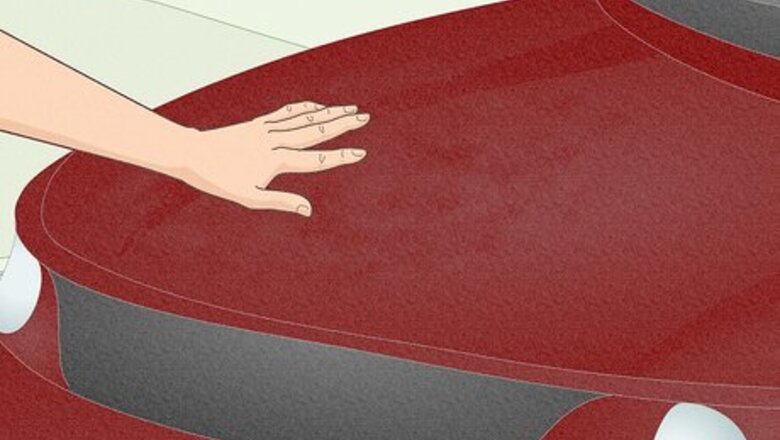
views
Prepping and Cleaning
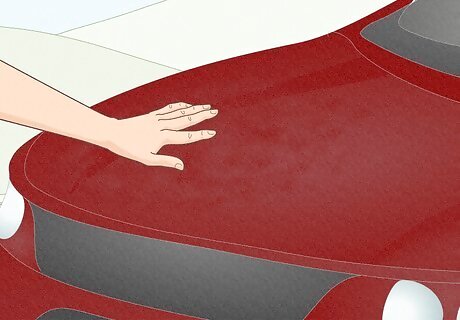
Inspect the paint to make sure the clear coat is still intact. Unfortunately, you won’t be able to restore spots where the clear coat is gone, no matter how much you polish. Check the car and see if there are any spots where the paint is peeling or flaking off. If most of the paint looks okay and is only faded, then the polishing process should restore it. You can still restore the rest of the car if there are damaged spots. Those damaged spots will just still look faded when you're done. If the clear coat is gone, don’t panic! You can still sand and re-paint these spots, or the whole car if you have to.
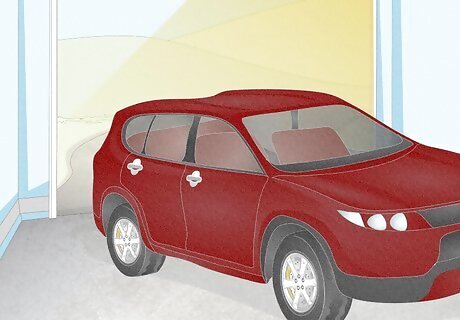
Park in a well-ventilated and shady area. You’ll be working with chemicals and don’t want to inhale any fumes or make a mess. Make sure you’re working outside, or in a garage with the door open. Also work in a shaded area, so the car compound works properly. Try to make sure the car's surface is at least 50 °F (10 °C) so the polish and wax don't solidify.
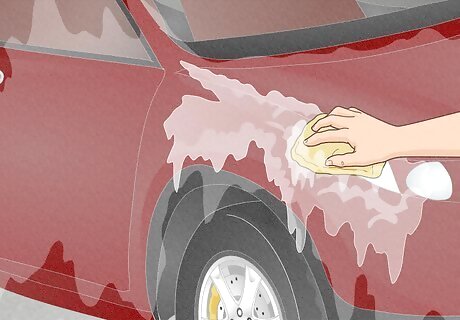
Wash your car with soap and water to get rid of any dirt. Wet the car with a hose, then pour some car soap into a bucket of water. Swish a microfiber cloth or sponge around to make the water sudsy. Scrub the whole car, working from top to bottom, to get a nice layer of soap on it. A power washer makes this job a lot easier, but a plain garden hose or bucket of water will do the trick too. Don’t try to wax or polish the car without washing it first. If there’s any dirt on the car, the brushes will scratch the paint.
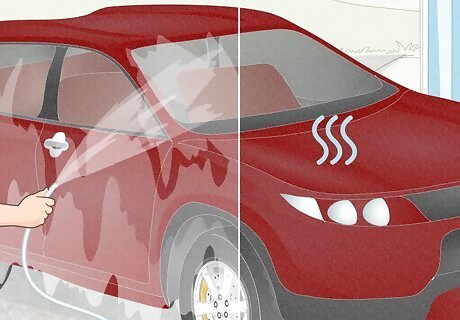
Rinse and dry the car. Spray the car down once more with the hose to get rid of any suds and soap scum. When you’re done, rub the car down with a clean, dry microfiber cloth. Then leave the car outside to dry before moving on. Don’t start compounding or polishing until the car is totally dry. The compound won’t work right if the car is wet.
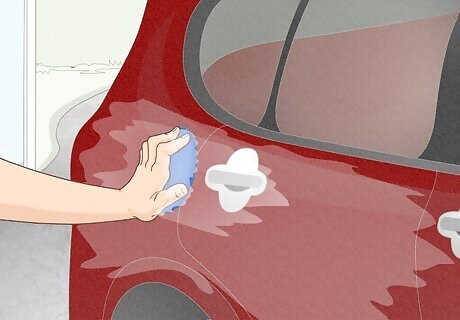
Rub the car with a clay bar to remove tough residue. Squeeze the bar in your hand to soften it up a bit and shape it into a disc. Then spray the clay lubricant onto the spot you're working on and rub it with the clay in a back-and-forth motion. When you're done, wipe the lubricant off with a clean microfiber towel. Continue working around the car and rub any faded spots. Clay bars are sold at any auto parts store. If your car only has minor sun damage, the clay bar treatment might actually fix it right up without further polishing.
Buffing and Polishing
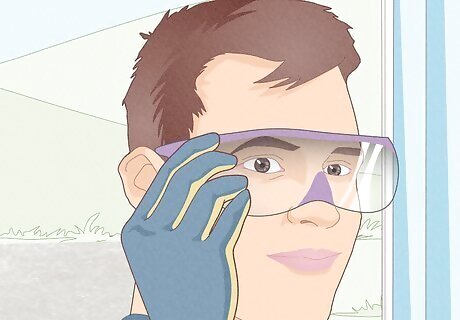
Put on gloves and goggles to protect yourself. You'll be working with chemicals and don't want to get any on your skin or eyes. Always put on goggles and a thick pair of rubber or work gloves before getting started.
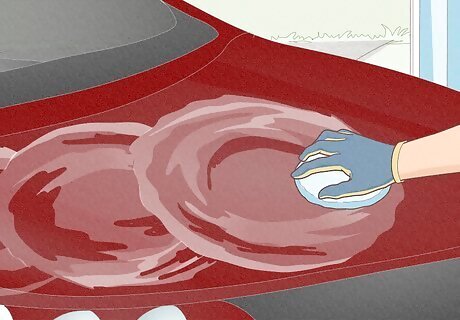
Rub compound on the car in a circular motion with a wet buffing pad. Squeeze some compound onto a wet microfiber pad. Rub it onto the car in a circular motion and spread it around so the car paint looks a bit hazy. Use increasing pressure to work the compound into the paint. Apply it to all the faded sections of the car. Car compound is a common item that you can find in any auto store. It works like sandpaper and removes damaged paint layers. You can do all of this by hand, or with a rotary buffer. If you use a buffer, make sure to press lightly so you don’t take off any of the car’s paint.
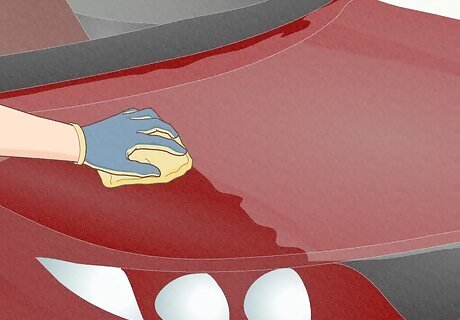
Buff the compound off to remove damaged paint. Use a fresh microfiber towel. Rub with firm pressure on all the sections that you applied compound to buff it off. You’ll probably already notice more shine on the car! You might need to switch to a fresh towel if the one you’re using gets too gunked up.
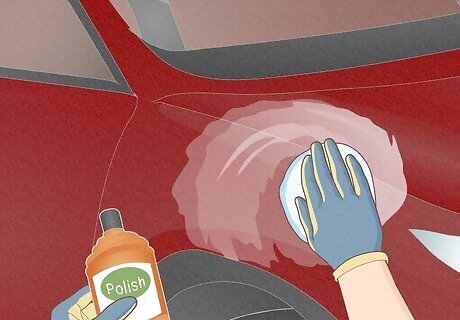
Squeeze polish onto a pad and rub it onto the damaged areas. The polish goes on in the exact same way as the compound. Squeeze some polish onto a new microfiber pad and rub it into the damaged parts of the car with a circular motion until the paint looks hazy. Car polish is also very easy to find at any auto store. It’s similar to the compound, but is less abrasive for a finer finish. Use a fresh pad to apply the polish! Don’t use the same one you used for the compound.
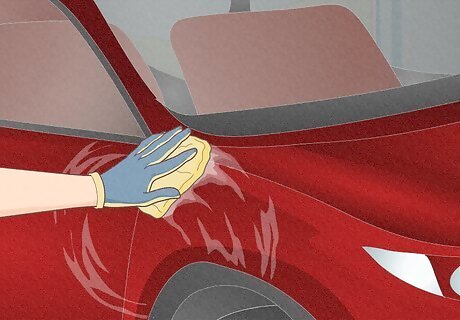
Buff the polish off to reveal a new shine underneath. Use a clean microfiber towel and rub the polish in a circular motion with firm pressure. Work around the whole car to get all the polish off. Now your car is probably really shining! If some spots still look faded, then the clear coat was probably too sun-damaged. You can fix that by re-painting those spots.
Protecting the Finish
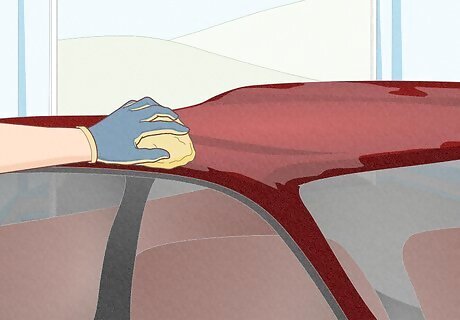
Wax the car to protect the new polish and finish. Dip a microfiber rag into a jar of wax and rub some onto the rag. Apply it to all the spots you restored with a circular motion. Let the wax dry for 2 minutes, then wipe it off with a clean microfiber cloth. If you’re waxing near trim or plastic parts of your car, cover them with masking tape first. The wax could discolor these sections.
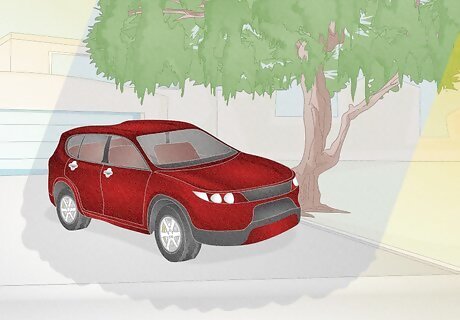
Park in the shade as much as possible to limit sun exposure. Sun damage can’t happen without the sun, after all. Whenever you take your car out, try to find a shady spot to leave it in. Awnings, trees, or buildings all provide good cover. If you have a garage at home, park in there. These little tricks should protect the paint from harmful UV rays. If you don’t have a shady spot to park, you could also protect the car with a sheet or car covering.
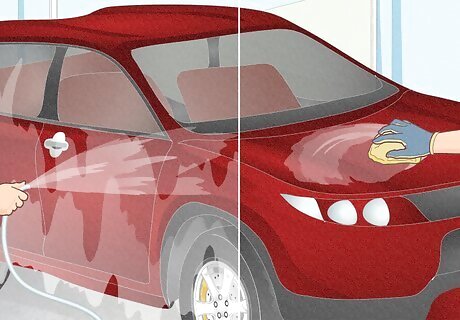
Wash and wax your car regularly to keep the finish looking great. Regular washing prevents dirt and grime from building up and causing your car’s paint to fade. Give your car a good wash every 2-4 weeks to maintain that shine. Also wax the car every time you wash it to protect the finish. Washing and waxing the car yourself might be too time-consuming, so you can always bring it to a carwash for more convenience.


















Comments
0 comment